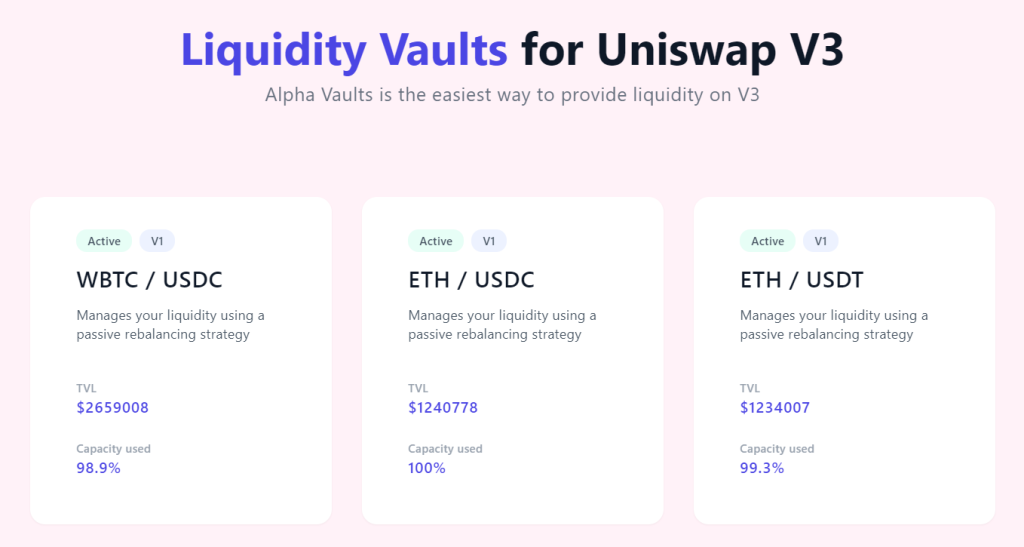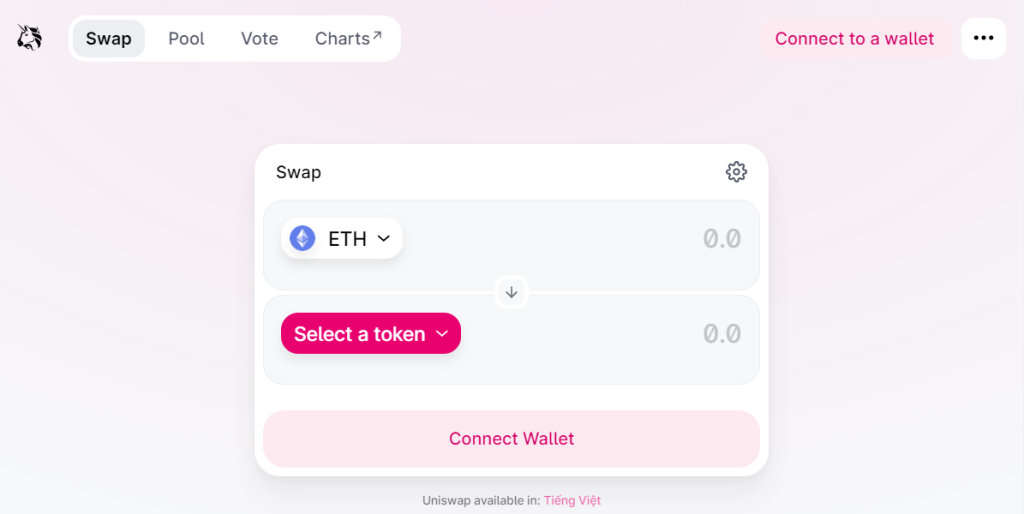
Uniswap V3 was released on May 5, 2021. This version introduced significant improvements, including concentrated liquidity, multiple fee tiers, and enhanced price oracles, making the platform more efficient and flexible for users and liquidity providers. The launch aimed to increase capital efficiency and provide better trading experiences in the decentralized finance (DeFi) ecosystem.
Introduction to Uniswap V3
Overview of Uniswap V3
Uniswap V3 is the latest iteration of the Uniswap decentralized exchange protocol, launched on May 5, 2021. It brings significant improvements over its predecessors, focusing on enhanced capital efficiency, customizable liquidity provision, and improved price oracles. Uniswap V3 allows liquidity providers to concentrate their capital within specific price ranges, optimizing the use of their funds and potentially increasing returns. This version also introduces multiple fee tiers and advanced price oracle functionalities, making it more versatile and efficient for both traders and liquidity providers.
Key Innovations in V3
Uniswap V3 introduces several groundbreaking features that set it apart from previous versions:
- Concentrated Liquidity: Liquidity providers (LPs) can now concentrate their liquidity in specific price ranges rather than providing it across the entire price curve. This innovation significantly increases capital efficiency and allows LPs to earn more fees with less capital.
- Multiple Fee Tiers: Uniswap V3 offers three different fee tiers (0.05%, 0.30%, and 1.00%) to accommodate various types of liquidity pools and risk profiles. This flexibility helps LPs to better match their fee earnings with the volatility and trading volume of the assets they support.
- Improved Price Oracles: V3 enhances the accuracy and security of price oracles by using time-weighted average prices (TWAPs). This method provides more reliable price data and reduces the risk of manipulation, making it ideal for use in decentralized finance (DeFi) applications.
- Non-Fungible Liquidity: In V3, liquidity positions are represented as non-fungible tokens (NFTs), allowing LPs to create customized liquidity strategies. This feature provides greater control and flexibility over how liquidity is managed and utilized.
- Range Orders: LPs can set up range orders that function similarly to limit orders in traditional finance. This enables more precise control over liquidity deployment and trading strategies.

Release Date of Uniswap V3
Official Announcement
Uniswap V3 was officially announced on March 23, 2021, through a comprehensive blog post on the Uniswap website and various social media channels. The announcement detailed the innovative features and enhancements that would be introduced with V3, such as concentrated liquidity, multiple fee tiers, and improved price oracles. The Uniswap team provided extensive technical documentation and resources to help developers, liquidity providers, and users understand the new functionalities and prepare for the transition. This proactive communication aimed to ensure a smooth upgrade process and inform the community about the benefits and changes they could expect.
Deployment on Ethereum Mainnet
Uniswap V3 was successfully deployed on the Ethereum mainnet on May 5, 2021. The deployment marked a significant milestone for the Uniswap protocol, bringing its advanced features live for all users. The launch involved rigorous testing and close coordination with the community to ensure a seamless transition from Uniswap V2 to V3. Users could immediately start providing liquidity and trading using the new features, experiencing enhanced capital efficiency and more flexible liquidity management. The successful mainnet deployment of Uniswap V3 solidified its position as a leading decentralized exchange platform, setting new standards in the DeFi ecosystem for functionality and user experience.
Features of Uniswap V3
Concentrated Liquidity
Concentrated liquidity is one of the most transformative features introduced in Uniswap V3. This innovation allows liquidity providers (LPs) to allocate their capital within specific price ranges, significantly enhancing capital efficiency. Here’s how it works:
- Custom Price Ranges: LPs can choose the exact price range within which they want to provide liquidity, concentrating their assets around the most active trading prices. This means liquidity is no longer spread uniformly across all price points, but rather focused where it is most needed.
- Increased Returns: By concentrating liquidity in narrower price bands, LPs can earn higher fees on their capital. This targeted approach maximizes the use of funds, as liquidity is provided precisely where trading activity is highest.
- Enhanced Flexibility: LPs can adjust their price ranges dynamically in response to market conditions, allowing them to optimize their strategies and manage risk more effectively. This flexibility enables a more proactive approach to liquidity provision.
Multiple Fee Tiers
Uniswap V3 introduces multiple fee tiers, providing greater flexibility and catering to different types of liquidity pools and risk appetites. The new fee structure includes three distinct tiers:
- 0.05% Fee Tier: This tier is designed for stablecoin pairs and other low-volatility assets. It offers lower fees to encourage more trading activity, which can benefit LPs by generating higher trading volumes.
- 0.30% Fee Tier: This standard fee tier is suitable for most trading pairs, including major cryptocurrencies. It balances risk and reward, providing adequate compensation for LPs while maintaining reasonable trading costs for users.
- 1.00% Fee Tier: This higher fee tier is intended for more volatile or exotic assets. It compensates LPs for the increased risk associated with these assets and helps maintain liquidity in less stable markets.

Benefits of Uniswap V3
Enhanced Capital Efficiency
Uniswap V3 introduces significant improvements in capital efficiency, allowing liquidity providers (LPs) to maximize their returns with less capital:
- Concentrated Liquidity: LPs can allocate their funds to specific price ranges where they expect the most trading activity. This means that liquidity is no longer spread evenly across all price points, but rather focused where it can generate the most fees. This targeted allocation makes the capital much more effective and increases potential earnings.
- Higher Returns with Less Capital: Because liquidity can be concentrated in narrow price bands, LPs can achieve the same level of market depth as in Uniswap V2 but with much less capital. This increased efficiency means that LPs can earn higher returns on their investments without needing to provide as much liquidity.
- Dynamic Adjustments: LPs have the flexibility to adjust their liquidity positions in response to market changes. This allows them to optimize their strategies and react to market conditions in real-time, further enhancing the efficiency and profitability of their capital.
Improved Price Oracles
Uniswap V3 brings significant advancements in price oracle mechanisms, making them more accurate and reliable:
- Time-Weighted Average Prices (TWAPs): Uniswap V3 uses time-weighted average prices, which smooth out short-term price fluctuations and provide a more stable and accurate price feed. This method helps reduce the risk of price manipulation and ensures that the price data used for transactions and DeFi applications is reliable.
- Enhanced Security: The improved price oracles in Uniswap V3 offer better protection against flash loan attacks and other forms of price manipulation. This security enhancement is crucial for maintaining the integrity of decentralized finance (DeFi) protocols that rely on accurate price data.
- Better Integration with DeFi Applications: More accurate and reliable price oracles improve the functionality of DeFi applications that depend on price feeds, such as lending platforms, derivatives, and automated trading strategies. This integration supports the overall growth and stability of the DeFi ecosystem.

Community and Developer Reaction
Initial Reception
The release of Uniswap V3 was met with significant excitement and anticipation within the cryptocurrency community and among developers. Here are some key points about the initial reception:
- Positive Feedback: The community largely praised the innovations brought by Uniswap V3, particularly the introduction of concentrated liquidity and multiple fee tiers. These features were seen as major advancements that could greatly enhance liquidity provision and trading efficiency.
- High Adoption Rates: Within a short period after the launch, many liquidity providers and traders migrated to Uniswap V3 to take advantage of the new features. The ability to earn higher returns with more efficient use of capital was a strong incentive.
- Developer Interest: Developers showed keen interest in the new functionalities offered by Uniswap V3, such as the improved price oracles and NFT-based liquidity positions. These innovations opened up new possibilities for building advanced DeFi applications and integrating with the Uniswap protocol.
- Market Buzz: The launch of Uniswap V3 generated significant buzz across social media platforms, forums, and cryptocurrency news outlets. Many industry experts and influencers discussed the potential impacts of V3 on the DeFi landscape.
Impact on DeFi Ecosystem
Uniswap V3 has had a profound impact on the decentralized finance (DeFi) ecosystem, influencing various aspects of liquidity provision, trading, and protocol development:
- Increased Liquidity Efficiency: The introduction of concentrated liquidity has set a new standard for capital efficiency in DeFi. This has encouraged other decentralized exchanges to explore similar mechanisms, leading to overall improvements in the DeFi space.
- Enhanced Market Depth: By allowing LPs to focus their liquidity within specific price ranges, Uniswap V3 has contributed to deeper liquidity pools, reducing slippage and improving the trading experience for users.
- Innovation Catalyst: The advanced features of Uniswap V3, such as the NFT-based liquidity positions and improved price oracles, have inspired developers to create more sophisticated DeFi applications. This has led to a wave of innovation and new projects built on or integrated with Uniswap V3.
- Competitive Dynamics: Uniswap V3’s enhancements have increased competition among decentralized exchanges. Competing platforms have been pushed to innovate and improve their offerings to keep up with Uniswap’s advancements.
- User Adoption: The user-friendly interface and powerful features of Uniswap V3 have attracted more users to DeFi, expanding the ecosystem and increasing overall participation. This growth has also brought more liquidity and trading volume to the market.

Migration from Uniswap V2 to V3
Steps to Migrate
Migrating liquidity from Uniswap V2 to V3 involves several key steps to ensure a smooth transition and to take advantage of the new features offered by V3. Here’s how to migrate your liquidity:
- Access the Uniswap Interface: Visit the official Uniswap website at uniswap.org and select the Uniswap V3 interface.
- Connect Your Wallet: Click on the “Connect Wallet” button and choose your wallet (e.g., MetaMask, Trust Wallet). Ensure that your wallet is connected to the Ethereum network.
- Navigate to the Pool Section: Go to the “Pool” tab where your V2 liquidity positions are displayed.
- Select Liquidity Positions: Identify the V2 liquidity positions you want to migrate. Click on each position to view details and options.
- Remove Liquidity from V2: To migrate, you first need to remove liquidity from your V2 positions. Click “Remove” and specify the amount you want to withdraw. Confirm the transaction in your wallet.
- Add Liquidity to V3: After withdrawing your liquidity from V2, switch to the V3 interface. Click on “Add Liquidity” and select the same token pair.
- Set Price Ranges: In V3, you can set specific price ranges for your liquidity. Choose the ranges where you want to concentrate your liquidity, optimizing for capital efficiency.
- Approve Tokens: Approve the tokens if this is your first time adding them to a V3 pool. Click “Approve” and confirm the transaction in your wallet.
- Supply Liquidity: Enter the amount of tokens you want to provide, review the details, and click “Supply.” Confirm the transaction in your wallet to finalize the migration.
Comparing V2 and V3
Uniswap V3 introduces several enhancements over V2, offering more advanced features and improved efficiency. Here’s a comparison of the key differences:
- Capital Efficiency:
- V2: Liquidity is spread uniformly across the entire price curve, which can be inefficient.
- V3: Liquidity providers can concentrate their liquidity within specific price ranges, significantly increasing capital efficiency and potential returns.
- Fee Tiers:
- V2: A single fee tier of 0.30% for all trading pairs.
- V3: Multiple fee tiers (0.05%, 0.30%, 1.00%) allow LPs to choose the most appropriate structure based on asset volatility and trading volume.
- Price Oracles:
- V2: Uses simple moving averages for price oracles, which can be less reliable.
- V3: Implements time-weighted average prices (TWAPs) for more accurate and secure price data, reducing manipulation risks.
- Liquidity Management:
- V2: Liquidity positions are represented as fungible tokens, limiting customization.
- V3: Liquidity positions are represented as non-fungible tokens (NFTs), allowing for more personalized and flexible liquidity management.
- Range Orders:
- V2: Does not support custom range orders.
- V3: Allows LPs to set specific price bands for their liquidity, functioning similarly to limit orders.
- User Experience:
- V2: Simpler interface but less efficient use of capital.
- V3: More complex interface with advanced features, offering higher efficiency and flexibility.

Future Developments and Upgrades
Planned Enhancements
Uniswap continues to innovate and improve its protocol to maintain its leadership position in the decentralized finance (DeFi) space. Here are some of the planned enhancements for Uniswap:
- Layer 2 Solutions: Uniswap is exploring Layer 2 scaling solutions like Optimistic Rollups and zk-Rollups to reduce transaction fees and increase throughput. These solutions aim to make trading on Uniswap more affordable and faster, particularly during periods of high network congestion.
- Cross-Chain Functionality: Enhancements to support cross-chain trading are being considered. This would enable users to trade assets across different blockchains seamlessly, expanding Uniswap’s reach and usability.
- Improved User Interface: Ongoing efforts to refine and enhance the user interface will make it easier for both new and experienced users to navigate the platform, manage their liquidity, and execute trades more efficiently.
- Enhanced Governance Tools: Developing more robust governance tools to facilitate community decision-making and proposal management. These tools will make it easier for UNI token holders to participate in governance and contribute to the protocol’s evolution.
- Advanced Analytics: Introducing more sophisticated analytics and reporting tools to help users track their trading performance, liquidity provision, and earnings more effectively. This can include detailed metrics, historical data, and real-time insights.
Ongoing Community Proposals
The Uniswap community plays a crucial role in shaping the future of the protocol through governance proposals. Here are some of the notable ongoing community proposals:
- Liquidity Mining Programs: Proposals to introduce or modify liquidity mining programs that incentivize users to provide liquidity to specific pools. These programs aim to boost liquidity and trading volume on the platform.
- Fee Adjustments: Discussions around adjusting the fee tiers or introducing new fee structures to optimize for different market conditions and trading behaviors. This includes proposals to fine-tune existing fee tiers or create dynamic fee models.
- New Token Listings: Proposals for listing new tokens on the Uniswap platform, expanding the range of assets available for trading. The community evaluates these proposals to ensure they meet the required standards and provide value to the ecosystem.
- Protocol Security Enhancements: Suggestions for improving the security of the Uniswap protocol, including audits, bug bounties, and implementing new security measures. These proposals aim to safeguard user funds and maintain the integrity of the platform.
- Governance Process Improvements: Ideas to streamline and improve the governance process itself, making it more efficient, transparent, and inclusive. This can include changes to voting mechanisms, proposal thresholds, and community engagement strategies.
- Partnerships and Integrations: Proposals to partner with other DeFi projects and integrate with new platforms to enhance Uniswap’s functionality and reach. These partnerships can bring new features, user bases, and liquidity to the protocol.